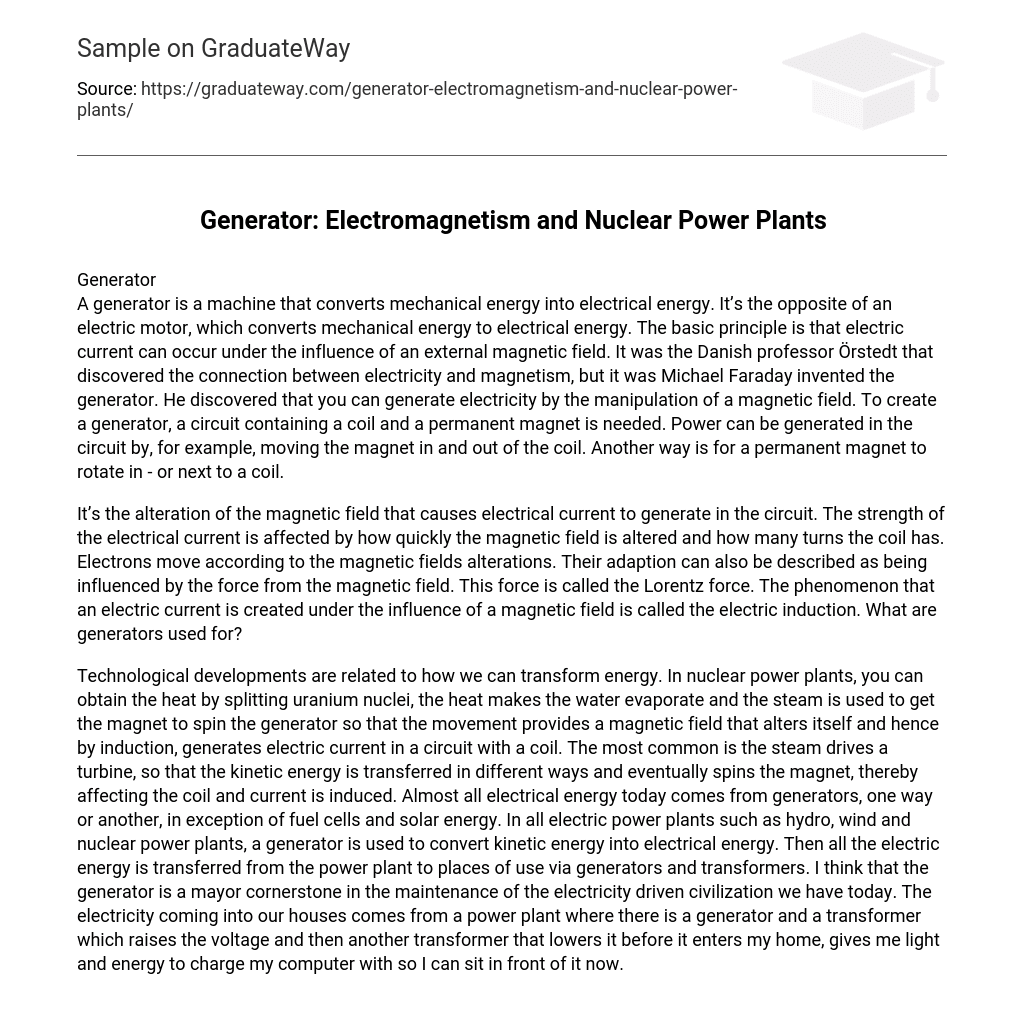Generator
A generator is a machine that converts mechanical energy into electrical energy. It’s the opposite of an electric motor, which converts mechanical energy to electrical energy. The basic principle is that electric current can occur under the influence of an external magnetic field. It was the Danish professor Örstedt that discovered the connection between electricity and magnetism, but it was Michael Faraday invented the generator. He discovered that you can generate electricity by the manipulation of a magnetic field. To create a generator, a circuit containing a coil and a permanent magnet is needed. Power can be generated in the circuit by, for example, moving the magnet in and out of the coil. Another way is for a permanent magnet to rotate in – or next to a coil.
It’s the alteration of the magnetic field that causes electrical current to generate in the circuit. The strength of the electrical current is affected by how quickly the magnetic field is altered and how many turns the coil has. Electrons move according to the magnetic fields alterations. Their adaption can also be described as being influenced by the force from the magnetic field. This force is called the Lorentz force. The phenomenon that an electric current is created under the influence of a magnetic field is called the electric induction. What are generators used for?
Technological developments are related to how we can transform energy. In nuclear power plants, you can obtain the heat by splitting uranium nuclei, the heat makes the water evaporate and the steam is used to get the magnet to spin the generator so that the movement provides a magnetic field that alters itself and hence by induction, generates electric current in a circuit with a coil. The most common is the steam drives a turbine, so that the kinetic energy is transferred in different ways and eventually spins the magnet, thereby affecting the coil and current is induced. Almost all electrical energy today comes from generators, one way or another, in exception of fuel cells and solar energy. In all electric power plants such as hydro, wind and nuclear power plants, a generator is used to convert kinetic energy into electrical energy. Then all the electric energy is transferred from the power plant to places of use via generators and transformers. I think that the generator is a mayor cornerstone in the maintenance of the electricity driven civilization we have today. The electricity coming into our houses comes from a power plant where there is a generator and a transformer which raises the voltage and then another transformer that lowers it before it enters my home, gives me light and energy to charge my computer with so I can sit in front of it now.





